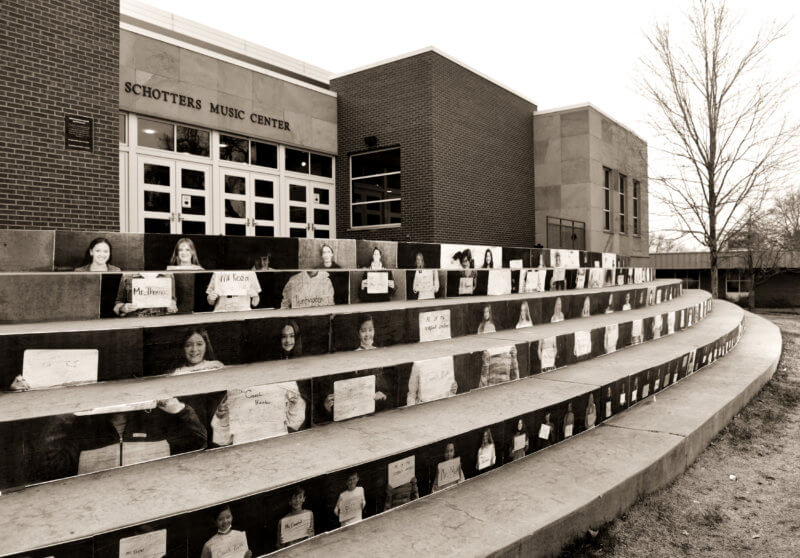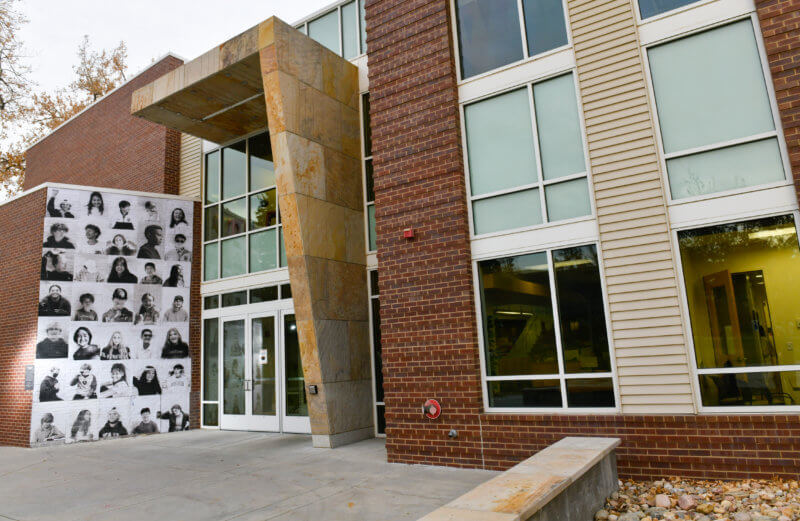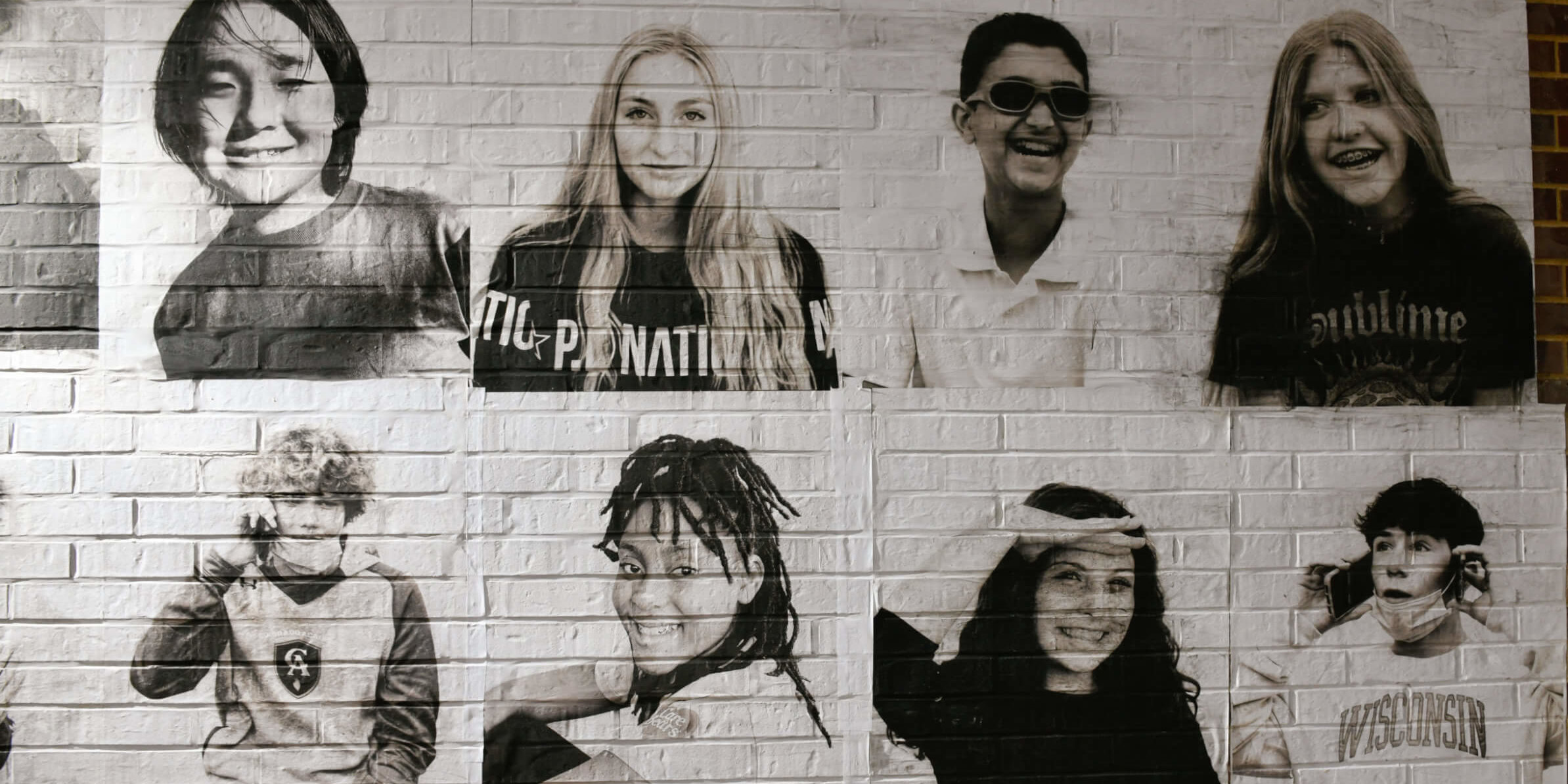As Trimester 1 came to a close, outdoor photography began to adorn various buildings on the Colorado Academy campus. It was difficult to miss the large-format black-and-white images of students, which were to be found on the steps of Schotters Music Center, the Froelicher Upper School, Ponzio Art Center, and the Campus Center.
The works were created by Karen Donald’s Upper School photography class, and inspired by the social-activist artist JR and his call to connect humanity through street art.
Students were asked to “consider portraiture beyond its traditions to an art form that can engage a community and create discussion,” says Donald. “Students learned how to construct studio-based portraits at the beginning of the trimester, and with these new skills of lighting, framing, and use of DSLR cameras, they then pushed beyond traditional portraits, toward ones that can engage a community and create discussion, i.e., art activism.”
Junior Kai Wang’s photography highlighted teachers who have left a lasting impression on students. In his portraits, students held signs with the names of teachers or coaches who were instrumental in their education.
“We picked this theme because we thought it spread a positive message about what teachers can do for their students,” he says. “It also provides a signal to teachers that their work has an important impact in shaping someone’s life. It shows teachers that they are remembered, even after the student leaves their class.”
Sophomore Allie Weil wanted her portraits to reflect students, as individuals, in their own way. “With yearbook photos, all students have the same pose and head tilt and background,” she says. “In my photos, students were asked to show more of who they are and how they’d want to be seen in front of the community.”
In some cases, that was easier said than done. “We thought people would know what to do, and what they would want in their photo,” Allie says. “Sometimes we had to get their friends to come out to make them laugh.”
When Allie’s photos were pasted at the Upper School entrance, people started noticing right away.
“When the images first went up, I would see people standing there looking at them and talking about them,” she says. “They’d say things like ‘that’s a really cute photo,’ or comment, ‘this has never been done before.’ They didn’t know I was part of it, so it was cool to hear.”
Kai’s photos were pasted on the Schotters steps. “I felt unsure how good our project was going to be when we set it up,” he says. “We cut every photo in half and glued each half separately. But when I took a step back and looked at it all, I was pleasantly surprised by how our project looked. By cutting the photo in two, we created a nice visual effect where, when standing from a certain point, the portraits didn’t seem like they were cut at all.”

View more photos of the portrait project
Ms. Donald’s students used inexpensive materials, such as photocopy paper and wheat paste, for the installations.
“The key focus was not on the materials but rather the community engagement, scale, and exterior placement of the works,” Donald says. “The project was designed to be non-permanent; as the weather changes, so will the artworks. Eventually the portraits will be completely removed and walls cleaned.”
Students in Donald’s class found their subjects by visiting study halls and free blocks, putting up posters, and emailing. They used a portable backdrop and shot the photos outdoors, finding locations to utilize the best lighting at the time.
The nature of the assignment allowed them to interact with more people on campus and in a variety of grades. “I came to CA in Ninth Grade under COVID, and I didn’t know many people,” Allie says. “And so this year, it was nice to talk to different students and ask how they’d like to be seen.”

